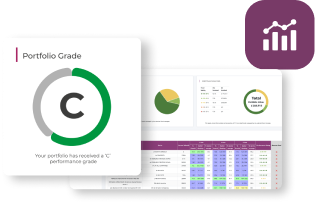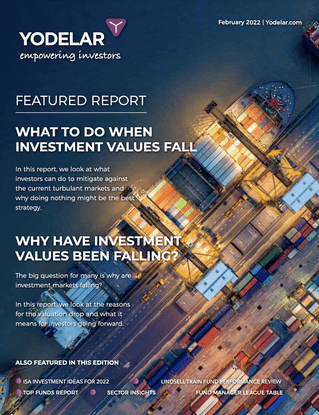-
Discover how gradual market shifts can silently alter your portfolio’s structure - exposing you to more risk or dampening growth without you realising.
-
Learn why a balanced portfolio today may be significantly misaligned tomorrow, and how this can affect your investment outcomes.
-
Find out how regular, evidence-based reviews can detect inefficiencies, overexposure, and hidden duplication within your investments.
-
Understand how the type of advice model you’re under influences how effectively and quickly your portfolio can be adjusted.
-
See why discretionary investment permissions can offer a critical advantage in maintaining portfolio alignment during volatile markets.
Many investors believe that once their portfolio has been aligned to their goals and risk profile, it will remain suitable over time. But markets do not stand still. Asset classes grow at different rates and, gradually, the structure of a portfolio can become distorted. This often subtle shift, known as allocation drift, can expose investors to more risk than intended or leave them too defensively positioned to benefit from future growth.
In this article, we explain how allocation drift occurs, why it matters for long-term portfolio efficiency, and how regular, evidence-based reviews can help investors stay on track and make more informed investment decisions.
What Is Asset Allocation Drift?
Every investment portfolio is built around a specific asset mix. Whether it includes equities, bonds, property, or cash, the allocation is intended to reflect the investor’s long-term goals and tolerance for risk. But over time, the value of each asset class changes at a different pace. This uneven growth causes the original allocation to shift.
For instance, if equities perform strongly over a sustained period, they can come to represent a much larger proportion of the portfolio than originally intended. A portfolio designed with a 60% equity and 40% bond split might drift to 70/30 or beyond. Without any action taken, the investor now faces higher levels of risk than planned. Conversely, during periods of equity market decline, the equity share may shrink, reducing growth potential and leading to a more cautious position than necessary.
This kind of drift is not just hypothetical. A study by Vanguard found that a 60/40 portfolio left unchecked over more than three decades would have gradually shifted to an 80/20 split, significantly increasing equity exposure and altering the overall risk profile of the portfolio.

This chart from Vanguard illustrates how the equity weighting in a 60/40 portfolio can shift dramatically over time if left unmanaged. The blue line shows how a portfolio that is never rebalanced can drift significantly - reaching an 80% equity exposure over time. The orange line, while more controlled through annual rebalancing, still allows for moderate drift between rebalancing points. This highlights why simple annual rebalancing may not be enough to maintain optimal portfolio alignment - particularly during volatile or fast-moving markets. More frequent, data-led reviews may be required to ensure the portfolio stays within its intended risk profile.
How Market Cycles Magnify Allocation Drift
Asset allocation drift does not happen in isolation. It is often accelerated by the natural cycles of the market. During a sustained bull market, equities typically grow at a much faster rate than other asset classes. This growth can cause portfolios to become unintentionally overweight in equities, increasing risk exposure beyond the investor’s comfort level or original strategy.
Likewise, in bear markets or periods of economic uncertainty, equity values may fall while defensive assets such as bonds or cash hold steady or rise. This shift can cause a portfolio to become overly cautious, reducing its potential to benefit when markets begin to recover.
These changes can take place gradually, but over time, they significantly alter the structure and behaviour of a portfolio. Without regular oversight and rebalancing, portfolios that were once balanced and aligned to the investor’s goals may end up heavily tilted in response to past market conditions - leaving them poorly positioned for the future.
Periods of strong market movement, particularly in one direction, make it even more important for investors to monitor their asset mix. A strategy that worked well in one market cycle may no longer be appropriate as conditions evolve.
Regular reviews help identify whether a portfolio’s current positioning reflects short-term market trends or a disciplined long-term investment strategy. And they help ensure that decisions are being made based on the investor’s objectives - not on momentum or outdated assumptions.
Why Portfolio Drift Should Not Be Ignored
Even modest changes in asset weightings can have a meaningful impact on portfolio performance and risk exposure. When left unchecked, allocation drift can cause a portfolio to deviate significantly from its intended strategy. This can result in too much risk being taken during periods of market stress, or too little exposure when conditions improve. In both scenarios, long-term outcomes can suffer.
Asset allocation is one of the most important factors in determining long-term investment success. But its effectiveness depends on regular oversight. Without it, portfolios can become misaligned - gradually losing the structure, balance, and discipline that underpin a robust investment strategy. Recognising and correcting these shifts is essential for maintaining a portfolio that works as intended. Recognising and correcting these shifts is essential for preserving long-term performance and keeping the portfolio aligned with its intended purpose.
The Importance of Portfolio Reviews
A thorough portfolio review is essential to ensuring your investments remain aligned with your objectives. Over time, a portfolio that once reflected your ideal asset mix can become skewed, with changing market conditions amplifying or diminishing specific holdings. Without regular oversight, these changes can go unnoticed, leading to risk exposure that is either too high or unnecessarily cautious.
A well-structured review goes beyond surface-level checks. It involves assessing each fund over several time periods to understand how it has performed compared to others in the same sector. It also considers whether each fund still has a clear purpose within the portfolio or if it has become redundant. Alongside performance, reviews examine the total cost impact of all charges, identify any repetition in underlying investments across different funds, and evaluate whether the portfolio has become overly concentrated in particular areas of the market.
At Yodelar, our fund analysis reviews provide this level of detail. We assess portfolios by asset class and individual fund performance across 1, 3 and 5-year periods. This enables us to identify funds that consistently underperform, expose concentration risk, or add little value relative to cost. By highlighting sector overexposure and duplication, we help investors understand whether their portfolio has drifted from its intended structure - and more importantly, whether it is still positioned to meet their long-term objectives.
For many investors, this insight can be the first step in re-establishing control over their investment strategy and taking action to improve overall portfolio efficiency.
How Different Advice Models Affect Portfolio Outcomes
Once portfolio drift is identified, the next step is ensuring that appropriate changes are made to bring the portfolio back in line. However, the ability to act efficiently and at the right time depends heavily on the structure of the advice firm that manages the investments. The model used to deliver investment advice can have a significant impact on how effectively a portfolio is managed.
Across the UK financial advice industry, portfolio management typically follows one of three structures, each with its own implications for responsiveness and oversight:
-
Advisory (non-discretionary) advice:
Whether delivered by independent or restricted firms, most advisers operate on an advisory basis. This means they must obtain the client’s consent before making any portfolio changes. While this approach ensures transparency and control, it can delay decision-making — particularly during periods of market volatility when timely action may be beneficial.
-
Discretionary investment management:
In this structure, investment decisions are delegated to a discretionary fund manager (DFM), who is authorised to make changes without seeking prior approval from the client. This enables faster decision-making and more responsive portfolio adjustments. Most advice firms do not hold discretionary permissions themselves but instead work with an external DFM, whom they appoint to manage client portfolios in line with agreed risk and investment parameters.
-
Restricted advice:
Restricted firms offer advice based on a defined scope, which may limit the product types or providers they consider. This restriction can vary — some firms may be limited to a particular range of funds, platforms or investment types, such as ISAs. However, being restricted does not necessarily mean poor fund selection, and all restrictions must be clearly disclosed to clients.
The Importance of Ongoing Portfolio Maintenance
It is not enough to construct a well-diversified portfolio at the outset. Left untouched, even the most carefully built portfolios can become inefficient over time. Rebalancing, reviewing fund suitability, adjusting for market changes, and maintaining diversification are all necessary to preserve the portfolio's structure and long-term viability.
Without this level of maintenance, portfolios can become misaligned, overly concentrated in specific sectors, or overly reliant on underperforming funds. Routine portfolio upkeep ensures that an investor’s holdings continue to serve a purpose and remain fit for their financial journey.
Investors should expect a level of active oversight that includes:
- Regular assessment of asset class exposure
- Continuous fund performance monitoring
- Adjustments based on market trends and risk environment
- Rebalancing to restore intended allocations
Proactive management is not just about protecting against loss, it is also about ensuring that opportunities for growth are not missed due to structural inefficiencies.
Keeping Your Portfolio On Track Over Time
Many investors underestimate how much their portfolio can drift over time. What begins as a carefully constructed plan can gradually shift, often without any intentional decisions being made. This hidden movement can increase risk, reduce returns, or cause the portfolio to become less aligned with its original purpose.
Regular reviews are essential. They provide the visibility needed to identify inefficiencies early and the insight to make informed decisions. But insight alone is not enough. The structure through which your investments are managed - whether restricted, independent, or discretionary - plays a critical role in how effectively changes can be implemented.
Discretionary investment management, when aligned with investor objectives, offers greater flexibility. It allows for timely adjustments to be made without waiting for client approval, helping portfolios stay responsive in both stable and volatile conditions.
Following Yodelar’s merger with MKC Wealth, our clients benefit from portfolios that are managed on a discretionary basis by MKC Invest, a discretionary fund management firm within the MKC group. This allows for timely portfolio changes without requiring client approval for each adjustment, helping to keep portfolios aligned with their intended objectives during both stable and volatile market conditions.
If you are unsure whether your portfolio remains suitable for your needs, or whether drift is quietly undermining its structure, a portfolio analysis can provide valuable clarity. Book your free review today and take the first step towards restoring alignment and improving long-term performance.

















